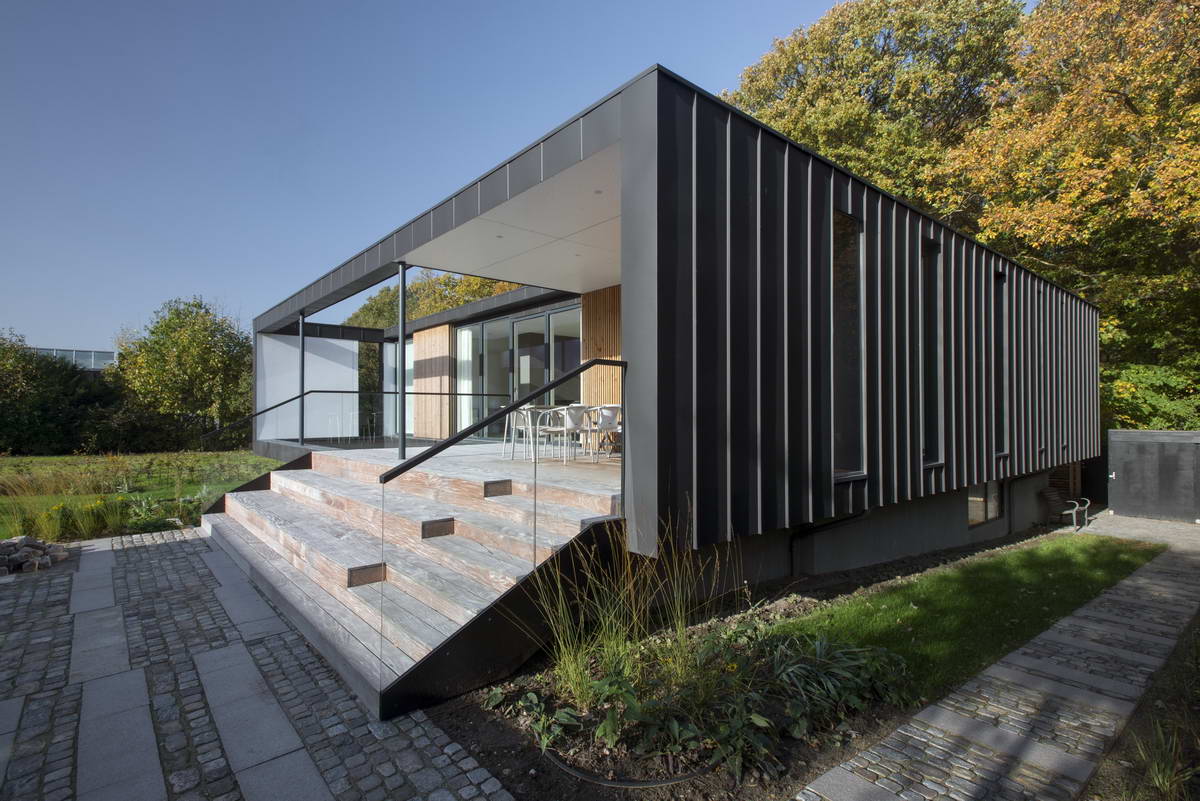#12363. Modern Pavilion with Contrasting Vertical Facade
This modern pavilion exemplifies minimalist architecture with a thoughtfully designed contrasting facade. The rectangular volume of the building possesses clear geometry and an expressive rhythm of vertical elements on the facade. The main structure is finished in black with vertical slats creating an effect of depth and texture, which gives the building a contemporary industrial character.
The facade skillfully combines opaque and transparent elements: on one side, a strict black profile with vertical louvers, and on the other — a fully glazed section that reveals the interior and creates visual lightness. This contrast is a key design technique, allowing the building to be simultaneously enclosed and open, depending on the viewing angle.
Particularly noteworthy is the terrace with wide natural stone steps, framed by frameless glass railings, which enhances the floating sensation of the structure. The canopy above the terrace appears light and weightless, creating a protected yet not enclosed space. This technique can be utilized in private construction to create a smooth transition between the interior and exterior of a home.
The surrounding landscape is integrated into the architectural composition — wild grasses and neat greenery contrast with the geometric rigor of the building, while natural stone paving adds textural diversity. This approach to landscape design strengthens the connection between architecture and its natural context.
In private construction, similar techniques — contrasting facade materials, vertical louvers to create rhythm and texture, large glass surfaces, and integration with the environment — can be successfully applied to create a modern, expressive, and functional living space.
